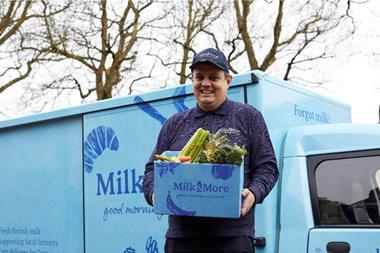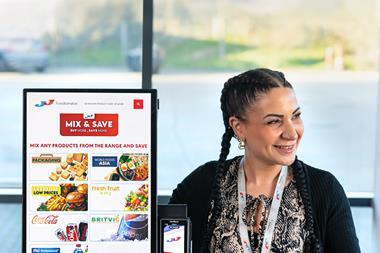Forget the recent baked beans wars that have stolen many a tabloid headline during the past six months. Or the rise of Omega-3 products that are now cropping up across all areas of the market. If you want a category in which there has been, and will continue to be, some of the most frenetic activity then you need look no further than the market for speciality and fine foods.
Much of the excitement has stemmed from Whole Foods Market's highly publicised entry into the UK early next year, which has forced many of the speciality food retailers and multiples to pull their socks up. But the market has also benefited from what seems to be a genuine growth in consumers prepared to pay more for something with that little bit extra.
As Simon Bell, retail director at Merchant Gourmet, says: "The explosion of food programmes, column inches dedicated to recipes and interest in celebrity chefs have encouraged consumers to become more experimental at mealtimes. This has resulted in an increased demand for choice and premium, authentic products."
Yet while the market for speciality foods is undoubtedly in growth, given the activity of the major players, it is still one of the hardest markets to track, or indeed place a value on given the increasingly diverse nature of products it encompasses.
This is exacerbated by the fact that foods classed as speciality even as recently as five years ago, such as olives, Continental cheeses and infused olive oils, have now become entrenched in the mainstream.
Says Bell: "There doesn't seem to be any real definition as to what speciality is. It is a term that the industry has created for products that you are not likely to buy every week and require for special meals.
"As consumers understand an ingredient more, become more acquainted with its uses and get more creative, demand increases and it becomes more mainstream - good examples of such products are sundried tomatoes and dried mushrooms.
"Olive oil has become more mainstream and also infused oils that were new five years ago are forming part of everyday cooking.Nut and seed oils are also becoming more mainstream ingredients."
TNS only tracks foods from foreign climes when calculating the speciality market, and then only across three categories - Continental cheese, Continental sliced and cooked meat, and olives - in order to make some sense of the market. Its data shows that the market for these foods is £377m, up 7.7% in value [52 w/e 18 June 2006], with double-digit growth in olives and meat and a 1% decline in cheese.
The largely unquantifiable nature of the market is a headache for retailers and manufacturers alike when deciding what products to produce and stock.
Keith Gill, managing director of Tanfield Food Company, which produces the Look What We Found! range of ambient ready meals, says that the company is constantly in discussion with retailers about where best to position its products in-store.
"When we first started there was considerable debate and confusion about where to site the products," he says.
"Waitrose had a long discussion with us and the foods went into its speciality/world sauces area. It has worked OK but we do need to get into a different location.
"There will be a natural evolution of moving from the speciality aisles into chilled ready meals."
The lack of market data also appears to be prohibitive for companies looking at the best areas within which to launch new products. A look around this month's Speciality & Fine Food Fair, for example, demonstrated the vast number of chutneys and pickles being produced by speciality players - but little else.
Indeed, Simon Fry, marketing director at fine foods distributor RH Amar, is one person in the industry who is unimpressed by a lot of so-called speciality products hitting the market.
"When you look at locally produced products you tend to see people churning out similar products.
"There were a lot of jams, chutneys and pickles at the show, which was quite disappointing. In terms of innovation it is difficult to find new products. Companies have to understand who the consumer is in their local area."
Fry says those companies that develop different products are the ones that are most likely to flourish.
This was the rationale behind Tanfield Food's launch into ambient ready meals, says Gill, who stresses that the company didn't just want to launch another chilled ready meal.
"We started to look at the trends, at the growth of the slow food movement and the advent of farmers' markets, but also at the absolute dominance of chilled foods. We felt that if we could find an alternative to frozen and chilled foods it would be better."
Tanfield Food's range is currently listed in Waitrose, Sainsbury's and 200 independent stores. The ambient nature of the products means that they can be stocked in all of the retailers' speciality areas. But the range also offers other benefits that Gill says are of importance to speciality consumers. "There is a lot of waste generated by chilled foods but because our products are ambient they have less impact on the environment."
Rob Ward, co-founder of On-Ward, a company established to help farmers and small companies get their products into retail channels, is another who believes that for companies to ensure long-term success they need a point of difference.
This will become increasingly important, he says, as he believes people's disposable incomes are set to drop in the near future, which will have an effect on the types of products they are prepared to fork out for.
"Price is an issue. I'm not convinced that income growth will be the same as last year or the year before, and this will impact on how products sell."n



















No comments yet